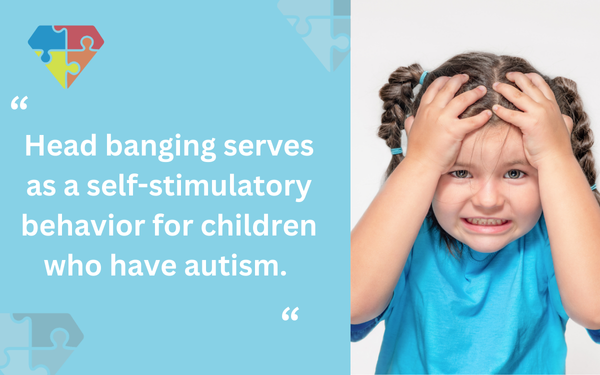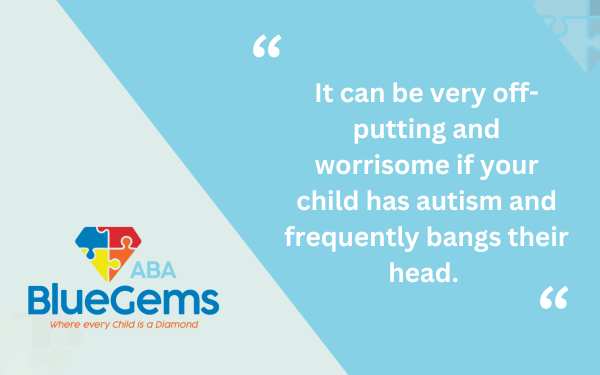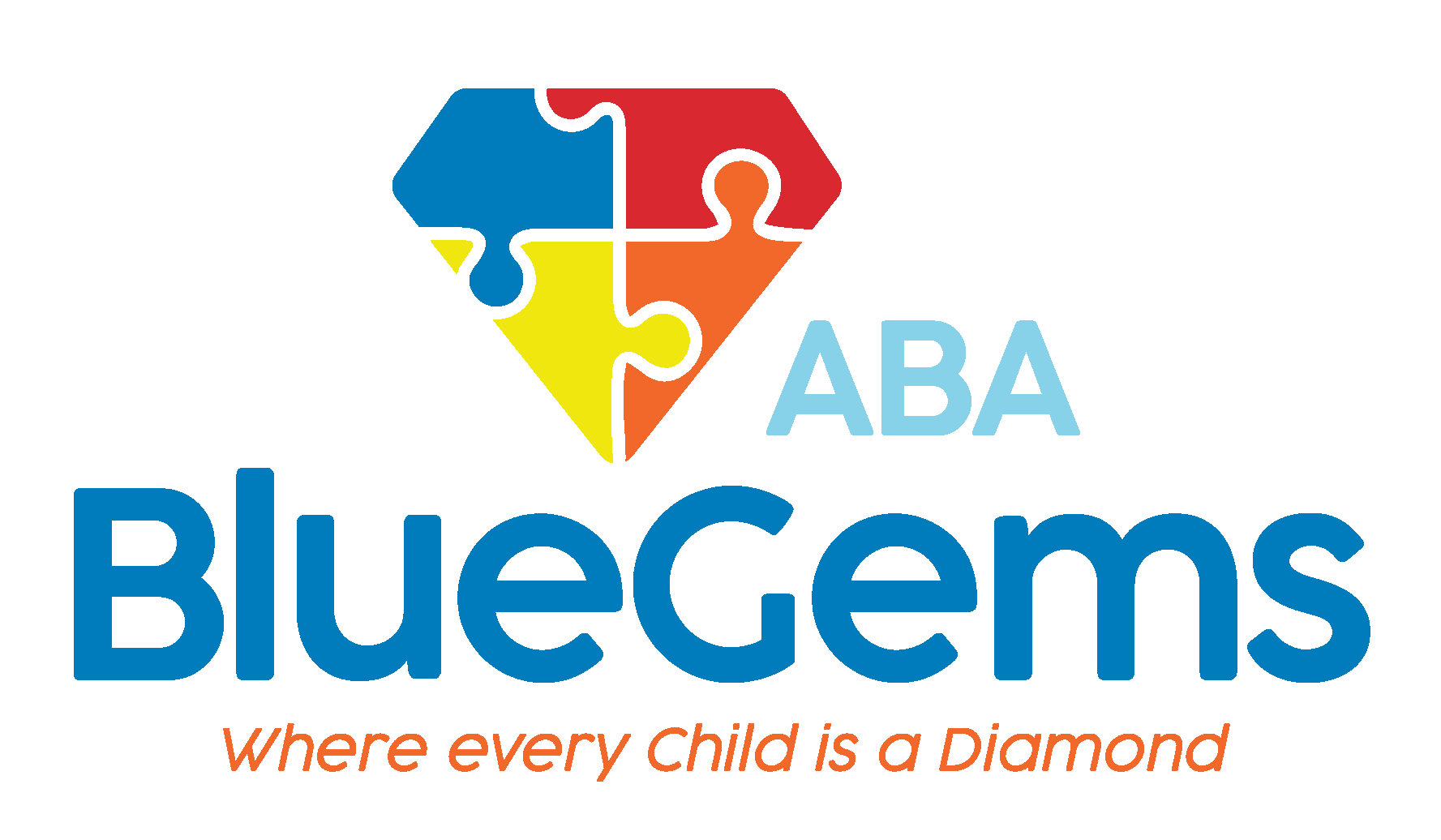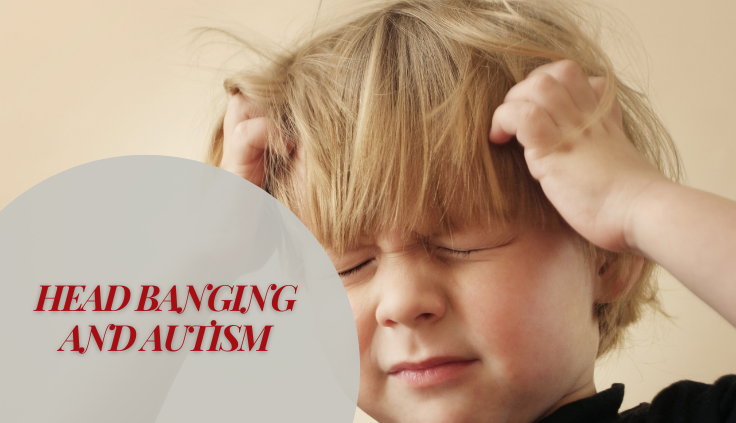Head Banging and Autism
Individuals with autism spectrum disorder (ASD) process things differently than others. Their neurodevelopmental disorder affects them in many ways, and it starts with how the brain functions and processes information.
While the signs and symptoms of autism can span a wide spectrum, it is commonly characterized by a deficit in communication and social interaction, as well as restrictive interests, repetitive behaviors and/or social sensitivities.
Many people with autism can experience high levels of stress and anxiety, and become easily overwhelmed at certain situations because of how their ASD affects them. Since they commonly have trouble communicating how they feel or what they need, they may exhibit different behaviors as a result.
These self-stimulatory behaviors — such as rocking back and forth or tapping feet repeatedly — are ways to try to calm themselves down and manage their emotions. Some are relatively harmless and are actually even done by neurotypical individuals.
There are some self-stimulatory behaviors, though, that can be harmful and even dangerous. One of those is head banging.
Below, we’ll dive further into head banging and autism, including why people do it and what can be done to support them.
Table Of Contents
What is the Relationship Between Head Banging and Autism?
Individuals with autism exhibit head banging more so than their neurotypical peers. It can be defined as hitting their head repeatedly on any solid object, including walls, floors or their crib.
Head banging serves as a self-stimulatory behavior for children who have autism. It’s a way that they try to cope with sensory overload, anxiety and/or frustration, for example.

Many children with autism face challenges when it comes to communication. They might not be able to effectively express how they are feeling or what they are thinking, which could lead to frustration and stress.
Some also experience sensory sensitivities. When they see bright lights, hear loud sounds or feel certain textures, they might easily become overwhelmed.
When this happens, they might bang their head as a way to get their frustration and stress out, or to even get attention. In this way, it can be seen as a non-verbal communication that’s meant to try to express something to others.
How Should You Respond to Your Child’s Head Banging?
It can be very off-putting and worrisome if your child has autism and frequently bangs their head. The immediate concern, of course, is preventing your child from hurting themselves badly, with a longer-term goal of figuring out how you can best support them.

The best way that you can support your child if they exhibit head banging is to try to identify the times when they do it most. In other words, what are some of the common triggers that occur before the head banging starts?
This could be anything from experiencing overstimulation or understimulation, emotional distress or changes in their routine. Many children with autism, for instance, thrive on routine and can become overwhelmed quickly at even the most minor changes to that routine.
By identifying some of these common triggers, you can potentially avoid those situations so your child doesn’t feel a way in which they would head bang.
At the same time, it’s important to provide a safe environment for your child if they head bang. If your child typically bangs their head in a few specific areas, you can add padding to them to ensure they don’t seriously hurt themselves.
How Can ABA Therapy Help with Head Banging?
The ultimate goal, of course, is to help your child deal with whatever it is they’re experiencing that leads them to head bang in the first place. This can take time, repetition, practice and professional help, but certainly can be achieved.
Applied behavior analysis (ABA therapy) is the leading treatment plan for children with ASD. It is a science-based approach to learning that helps children build social and communication skills.
In addition, ABA therapy can help children modify certain harmful behaviors, such as head banging. It can teach them how to manage their emotions better, communicate their wants and needs, and learn replacement behaviors to the head banging that are healthier and safe if they’re feeling overwhelmed.
ABA therapists have many strategies and tools at their disposal to teach children, and it’s all done on a personalized basis, targeting the specific behaviors or challenges that the individual child faces.
Blue Gems ABA Helps Children with ASD Modify Harmful Behaviors
Children with ASD exhibit head banging more so than their neurotypical peers do. It’s a way that they try to calm themselves down, center themselves, deal with their emotions and try to express what they want and need.
At Blue Gems ABA, we know that children with autism may have trouble expressing themselves or processing their emotions. That’s why we administer ABA therapy on a one-to-one basis, helping our patients build the communication, social and daily life skills with which they typically struggle, while also helping them find replacement behaviors for harmful acts such as head banging.
To learn more, please contact us today.




